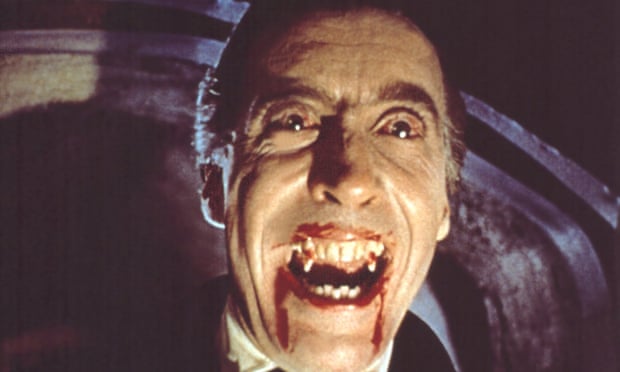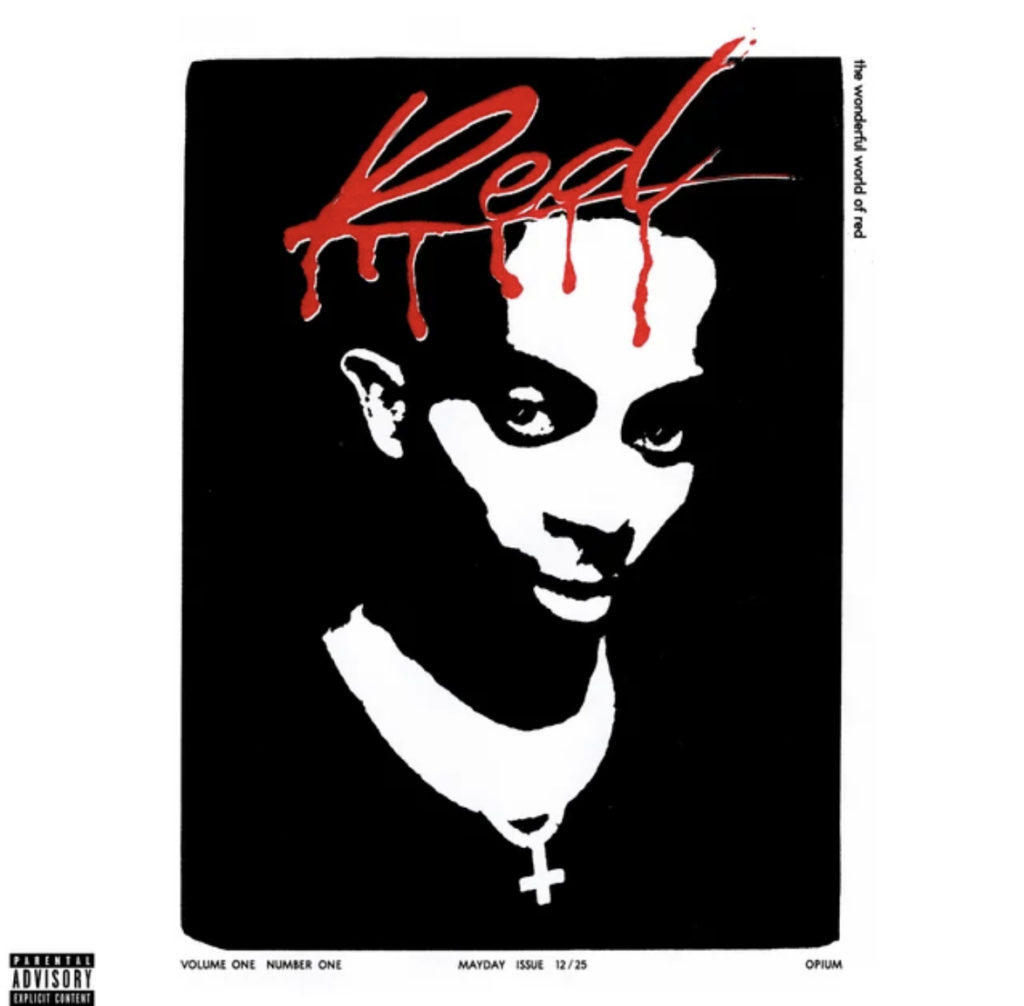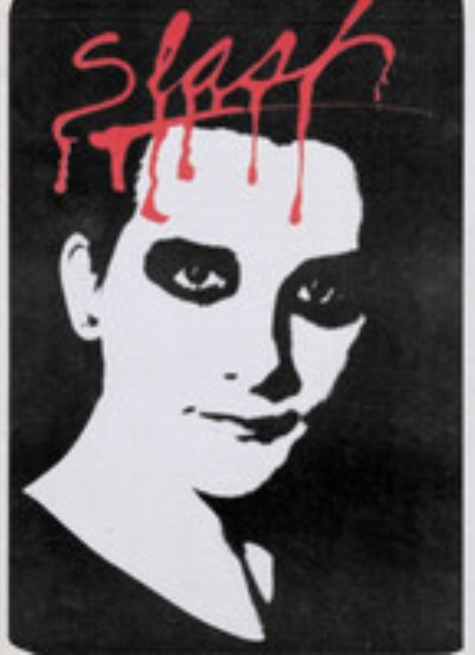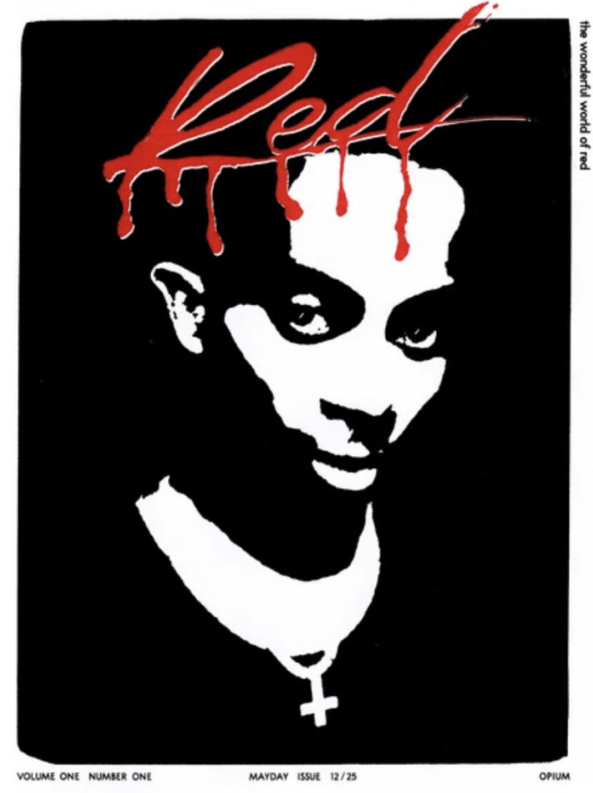*This post is a “blog essay” for ENGL 859 “Victorian Vampires” at Queen’s University.
Introduction
When Playboi Carti‘s album Whole Lotta Red was released on Christmas day in 2020, people mostly hated it. I remember the regularity of phrases like “whole lotta trash” in comment sections all over social media. The internet’s “busiest music nerd”–notorious critic Anthony Fantano–gave the album a “decent to strong 5 [out of 10].”

However, I sensed people’s attitudes regarding Playboi Carti and his latest project shift as the year went on, and noticed a stark change in rap listeners’ thinking when Rolling Stone declared Whole Lotta Red as the best, #1 rap album of 2021. WhileWhole Lotta Red was technically released at the end of 2020, one of the article’s authors, Jeff Ihaza (Senior Editor at Rolling Stone), argued that its release being a week prior to the beginning of 2021 was irrelevant because of the “seismic shift [that] the album represents.”
“Carti stakes ground in the current generation’s sonic sensibility and delivers one of the most forward-thinking rap records since Kanye West’s Yeezus.”
Jeff Ihaza, Senior Editor at Rolling Stone
Ihaza’s claims might have shifted opinions on Whole Lotta Red from being “mumble rap” and “trash” to “influential” and “bold.”
Additionally, in Ihaza’s “The Punk Monk Teachings of Playboi Carti” article/interview from early 2021, Carti said the “sound” of Whole Lotta Red was going to be “something that’s […] regular and relevant in the future.”
“That’s just part of creating something new. If this is something that people accept right away, how different is it?”
Playboi Carti in Rolling Stone
For hip-hop listeners, like it or not, Carti’s influence has been immense; traces of his unique, quick, energetic punk-rap can be found bleeding into almost every major rap release of 2021 and 2022.
And speaking of “bleeding”: something that’s impossible to ignore when consuming Whole Lotta Red is its vampiric aesthetic. The album features explicit references to the vampire–songs like “Vamp Anthem,” and “King Vamp” are essentially odes to the Gothic–and the album’s visual and sonic composition is, well, red. Bloody. Infectious. Vampiric.
You can listen to a couple of previews on the right if you don’t have Spotify, and if you do have Spotify, you should be able to listen to them in their entirety (if you’re logged in on your browser).
(Warning: explicit lyrics, NSFW).

Something funny: when Bram Stoker’s Dracula was released in 1897, critics weren’t exactly stunned. An anonymous reviewer in the June 26, 1897 issue of The Athenœum wrote that “Mr. Stoker’s way of presenting [the vampire is] of too direct and uncompromising a kind. [Stoker’s vampires] lack the essential note of awful remoteness and at the same time subtle affinity […] ‘Dracula’ is highly sensational, but it is wanting in the constructive art as well as in the higher literary sense” (Stoker 481).
.jpg?mode=max)
Another reviewer in an 1897 edition of London’s Punch magazine said that the sentimental element of Dracula’s romance is “mawkish” and that Stoker had set the story in a nonoptimal time period (483).
Dracula wasn’t exactly panned, but it certainly wasn’t accepted with open arms. However, Stoker invented a rendition of the vampire so bold and defining that it virtually created the myth as we know it today; Dracula is adapted and remade over and over again. I might argue that the same can (and will) be said of Carti’s rendition of the vampire.
Whole Lotta Red might be as biting, bold, and infectious to rappers and rap fans as Stoker’s Dracula has been to writers and readers. With a quick listen to any song by rising-artist Yeat, one can feel Carti’s fangs piercing the neck of his sonics.
Now: let’s take a dive into Whole Lotta Red and explore its influence and use of the vampire. I’m specifically going to focus on the song “Vamp Anthem,” which, as of writing this, is the second-most popular track off the album with over 130 million streams on Spotify, but I will also touch on the album as a whole. I’ve broken down my analysis of vampiric aesthetics into three components of the musical experience: Visual Art (album cover, stage design), Lyrics, and Sound and Atmosphere.
The Visual Art

With a bleeding “Red” scrawled across the top, WLR’s cover art features a black and white image of Carti sporting an upside-down cross necklace. Along the top right of the image, it says “the wonderful world of red,” and across the bottom “Volume One Number One,” “Mayday Issue 12/25,” and “Opium” appear in separate sections. It’s designed by Jung Chung A.K.A. “Art Dealer,” who is seemingly paying homage to the covers of the iconic Slash punk music magazine.

Whole Lotta Red’s cover appears to specifically emulate the first-ever issue of Slash, which featured Dave Vanian of “The Damned” staring into the camera. Their posture, eyeshadow, and the images’ overall lighting are nearly identical. They even have the same amount of blood streaks dripping from the text. (Drag the button in the middle of the images on the right to compare!).


Punk and metal music has always demonstrated “unholiness”: bands like Black Sabbath were “Satanists” that “changed music.” Carti’s Cross of Saint Peter–an upside-down cross that is now often associated with the occult and Satanism–works as a visual inversion of Christian heteronormative values, and his music works as an audible one. It might symbolize the dimension of queerness that’s ever-present in vampiric literature; it’s especially curious that on “New Tank” Carti raps “I got me some thots / They thought I was gay,” addressing rumours popping up regarding his sexuality, and his “vampy” fashion style.
The upside-down cross, bloody “Red,” and Vanian/Slash posturing work in combination to create a visual ode to vampiric-metal-punk-satanist-queer aesthetics. In short: it’s monstrous. Simple, yet unsettling, and certainly an adaptation. Whether it’s Stoker or Satan, Carti is pulling from all over the place–the vampiric past included.
Another aspect worth considering when it comes to Whole Lotta Red’s visuals is the stage design. Take the October 19th, 2021 performance of “Vamp Anthem” at the James L. Knight Center in Miami for example:
Red strobe lights and laser beams rapidly flash with the image of the upside-down cross doing the same behind the stage. As I watch Carti bounce on stage to his popular vampiric ode, it’s almost like he melts into a bleeding, writhing, jittering sensory experience along with his listeners; he and his audience bleed back in time to visit the vampire.
The Lyrics
Genius describes “Vamp Anthem” as an “energetic ode to the vampiric aesthetic displayed throughout Whole Lotta Red. “
“When them vamps outside, lil’ bitch, you better be ready”
Opening of “Vamp Anthem” by Playboi Carti
Something I found curious about “Vamp Anthem” is how “red” is often associated with violence using food as a catalyst:
“My flag the same color as cranberry (cranberry)”
“We caught him on the block, we topped his melon”
When referencing his flag being the colour of cranberry (red), he’s likely talking about the Bloods (gang), and when he says “we topped his melon,” it’s in reference to shooting someone in the head. Carti paints a violent image of a man’s head being “topped” (blown off), just like the redness of an exploding watermelon. Cranberries and melons are succulent, juicy, sweet foods, as blood is to the vampire. He displays gang violence as an insatiable thirst, where opposing members are trapped by the system, forever feeding off one another.
“Red” food is present throughout vampiric literature, like at the beginning of Dracula, when Johnathan recalls having “a chicken done up some way with red pepper, which was very good but thirsty” (Stoker 31). Redness, blood, violence, and consumption are at the forefront of Dracula and “Vamp Anthem.”
Carti’s lyricism is short, bursty, and decidedly repetitive, like cranberries popping in a microwave. If you listen to any of his songs, you’ll see what I mean. Take “Vamp Anthem’s” outro for example:
Vamp anthem, vamp anthem
Vamp anthem, vamp anthem, yeah
Vamp anthem, vamp anthem, yeah
Vamp anthem, vamp anthem, yeah
Vamp, uh, vamp, uh
Vamp, yeah, vamp, uh
Vamp, uh, vamp, yeah
Vamp, vampVamp, vamp
Fade out of Playboi Carti’s “Vamp Anthem.”
Vamp, vamp
Vamp, vamp
Vamp
On paper, this might look ridiculous. Maybe even insulting depending on your musical taste. But I’d argue that the repetition isn’t as silly as some might be tempted to say it is. Which leads me to my next point:
The Sound and Atmosphere
The sonic production of Whole Lotta Red is intricate, lively, and thoughtful. The driving component of “Vamp Anthem’s” beat is a reversal of Bach’s “Toccata and Fugue in D Minor, BWV 565”–a musical score that has become synonymous with horror media. The opening of Bach’s “Toccata and Fuge” is also directly used to open “Vamp Anthem” (although it might be sped up slightly, depending on your choice of rendition): a direct callback to Baroque music and the Gothic vampire.
User “Kartier” uploaded this version of Vamp Anthem to YouTube, featuring the original opening of “Tocatta and Fuge” overtop a scene from the first-ever vampire film Nosferatu (1922). Give it a watch:
When Bob Dylan (hear me out) accepted the 2016 Nobel Prize in Literature (the only musician to ever win the award) for “having created new poetic expressions within the great American song tradition” he ended his acceptance speech by saying:
“[S]ongs are unlike literature. They’re meant to be sung, not read. The words in Shakespeare’s plays were meant to be acted on the stage. Just as lyrics in songs are meant to be sung, not read on a page. And I hope some of you get the chance to listen to these lyrics the way they were intended to be heard: in concert or on record or however people are listening to songs these days. I return once again to Homer, who says, ‘Sing in me, oh Muse, and through me tell the story.’”
Bob Dylan
Do I think Dylan would be mortified by Playboi Carti? Probably. But that’s not the point. Dylan’s thesis still stands in the case of Whole Lotta Red: it’s not exactly what Carti is saying that makes him influential, but how he says it. Upon first listen (or glance), the repetition of “vamp,” “stop breathing,” or “demon time” might seem lazy, but I challenge listeners to think further. The outro of “Vamp Anthem” is surely repetitive, and it’s also punchy and bloody, like a vampire’s need to repeatedly feast on its victims.
Look at this Brooklyn Playboi Carti show in the Barclay’s Center on December 17th, 2021, featuring “Stop Breathing” and “Vamp Anthem” off Whole Lotta Red:
The energy is unmatched, and his fans look virtually possessed. The Playboi Carti concert is an atmosphere for jumping in a moshpit and letting your most wild energy loose.
Young people are infected by his music–it’s almost like Carti, the self-proclaimed “King Vamp” (as he says in his song by the same name), has turned his fans into baby vampires. Turns out, his fans are actually called “vamps.”
Fader magazine’s June 2019 Cover Story was about Playboi Carti, and touched on his interest in vampires. The last paragraph of the article is especially fascinating: his partner at the time, artist Iggy Azalea, told Ben Dandridge-Lemco (the article’s author) that “Carti loves vampire movies, especially cult classics like The Lost Boys and Interview with the Vampire. He watches both of them over and over — the characters are some of his biggest fashion inspirations.” As Dandridge-Lemco was leaving the room, post-interview, Carti called out: “’When you write that shit, tell ’em I’m a vampire.’”
In an earlier interview with Complex, Carti spoke on his interest in The Lost Boys: “‘I paused the movie and played my music over top of it and it looked so crazy. I thought, Damn, I wanna look like this. That’s me, that’s Playboi Carti, a vampire on a dirt bike. Flying. Laughing and shit. The fangs, my grills. Long hair, dreads. Rock star shit. You know what I’m saying? It’s fire.’”

Fader’s article marked a stark cultural shift—not only did it increase anticipation forWhole Lotta Red and its vampiric themes, but with Carti declaring that he himself is “a vampire,” fans began deeming themselves “vamps.” With a quick look around Playboi Carti internet spaces like r/playboicarti, you’ll find the endless mentioning of “vamps” and vampire emoji usage 🧛.
Carti’s music has simultaneously produced a new fictive and real-world vampire: the “vamp.” Whole Lotta Red’s fangs have created vamps worldwide, and with Stoker-like influence, it’s exciting to imagine the future possibilities that the album has created for vampiric invention and the rap genre.
Playboi-Carti-Works-Cited-1